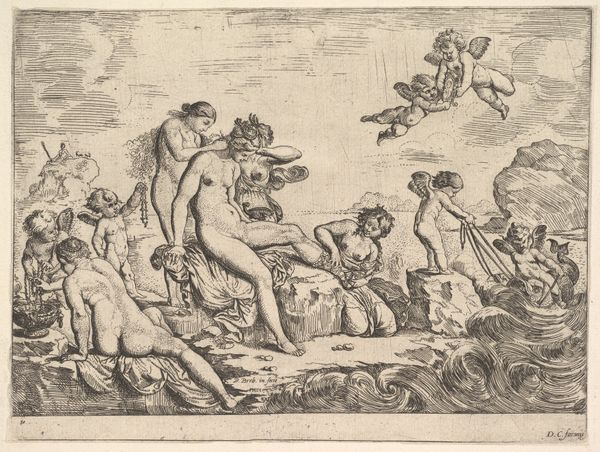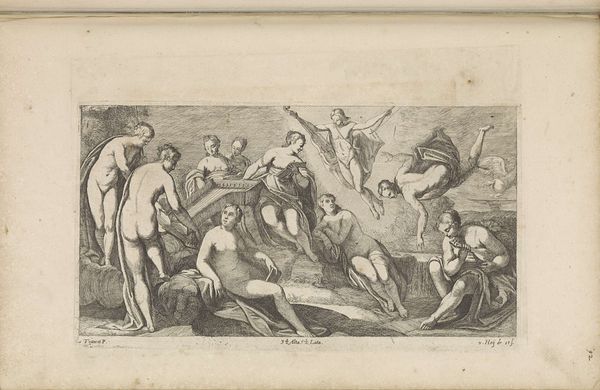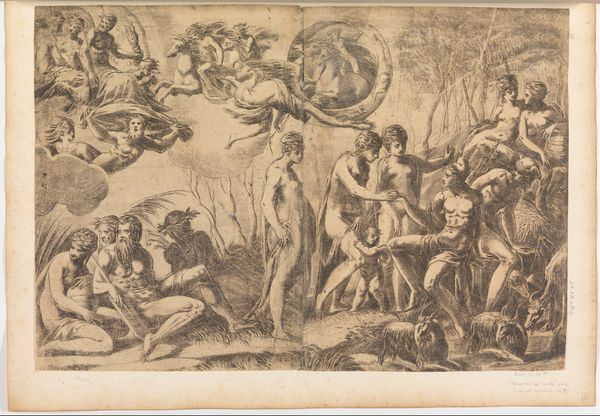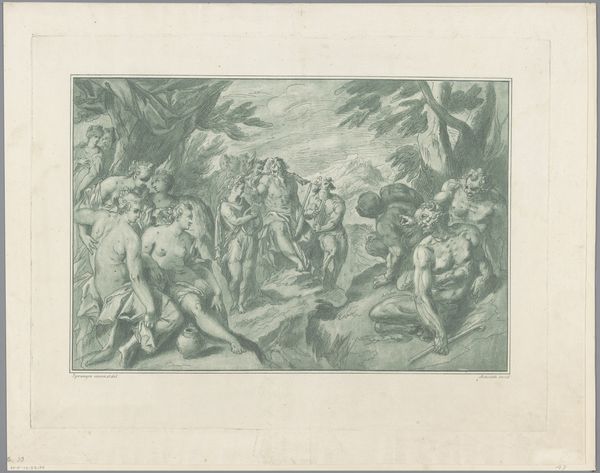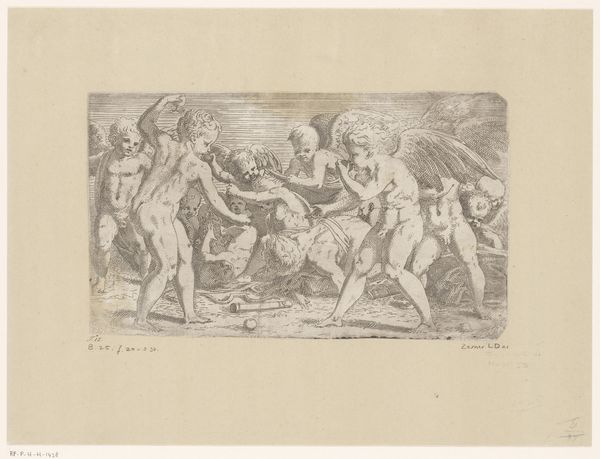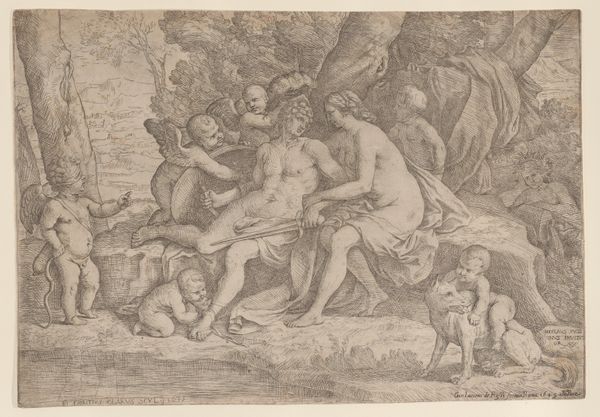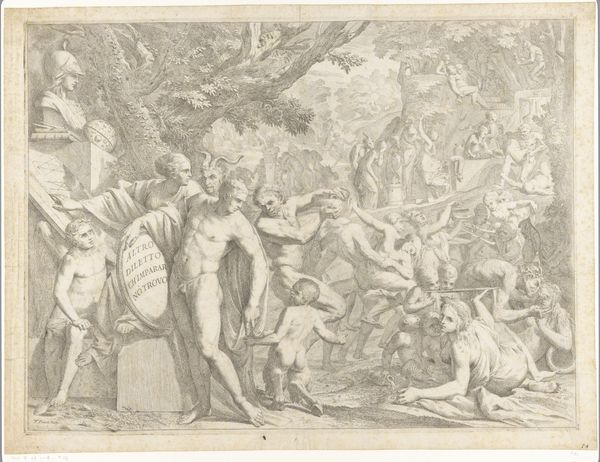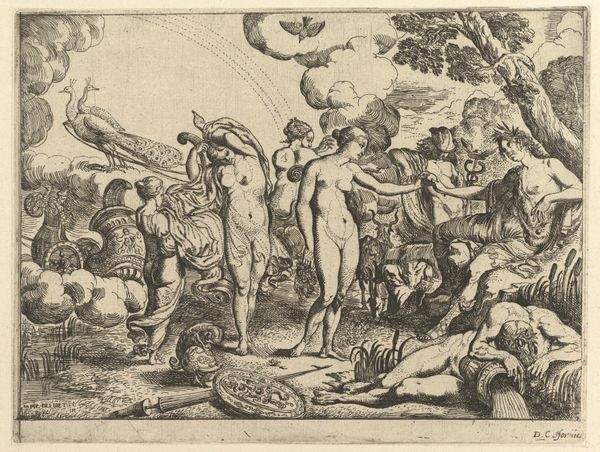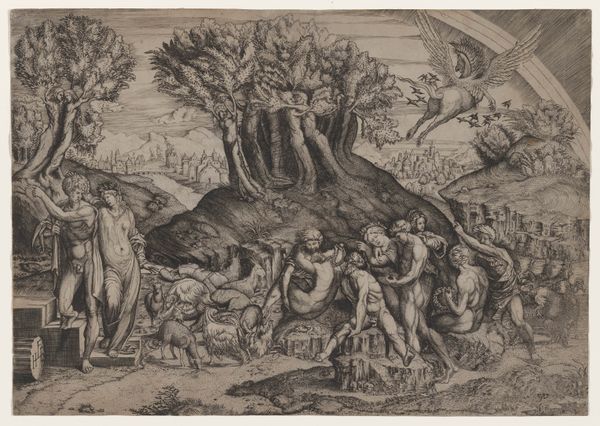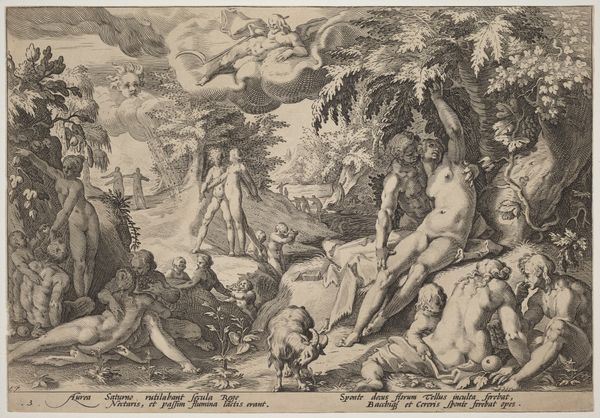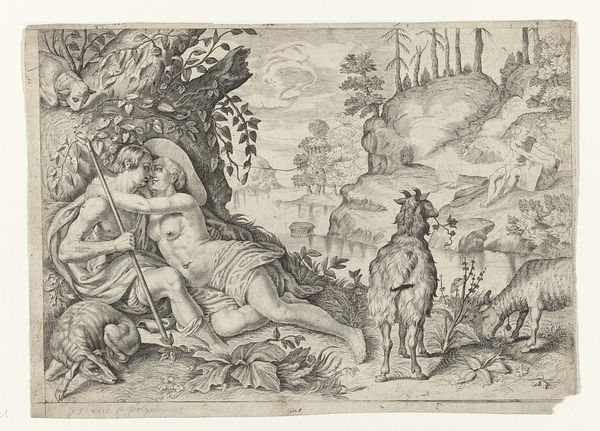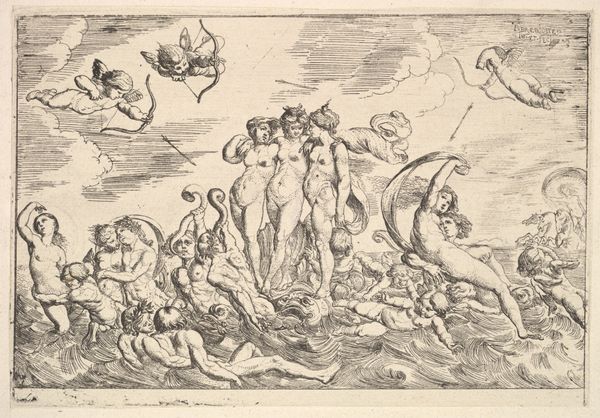
drawing, paper, ink
#
drawing
#
allegory
#
mannerism
#
figuration
#
paper
#
ink
#
pen work
#
nude
Dimensions: height 163 mm, width 223 mm
Copyright: Rijks Museum: Open Domain
Editor: Here we have "Venus met Amor en Jupiter met Ganymedes," a drawing in ink on paper, dating from about 1530 to 1560, by Meester van de Dobbelsteen. I'm struck by how the figures seem to float in the composition; it’s classical but also unsettling. What do you make of it? Curator: It’s an intriguing piece reflecting the Mannerist style, certainly. Beyond the allegorical content, depicting classical figures, I see a pointed commentary on power dynamics. Consider how these images of mythological narratives functioned within the context of courtly life and the patronage system. Editor: Could you elaborate on that? How did these images influence power? Curator: Think about the role of art in shaping perceptions of authority. These representations of gods engaging in acts of love and abduction were not merely decorative. They reinforced ideologies about social hierarchy, divine right, and male dominance. Ask yourself: how does this scene speak to issues of gender, sexuality, and control in the 16th century? Editor: So, it’s not just about pretty gods and goddesses; it’s about reinforcing specific power structures through classical narratives? Curator: Precisely! Mannerism itself, with its exaggerated forms and stylized compositions, could be seen as a deliberate departure from the classical ideals, potentially reflecting social and political unease during that period. It’s about spectacle, display, and asserting one’s place within the social hierarchy. Editor: That is so insightful! I never thought of art this way; thanks for shedding light on these different perspectives! Curator: My pleasure. These artworks engaged directly with their contemporary context and continue to teach us a lot about its power structures.
Comments
No comments
Be the first to comment and join the conversation on the ultimate creative platform.
